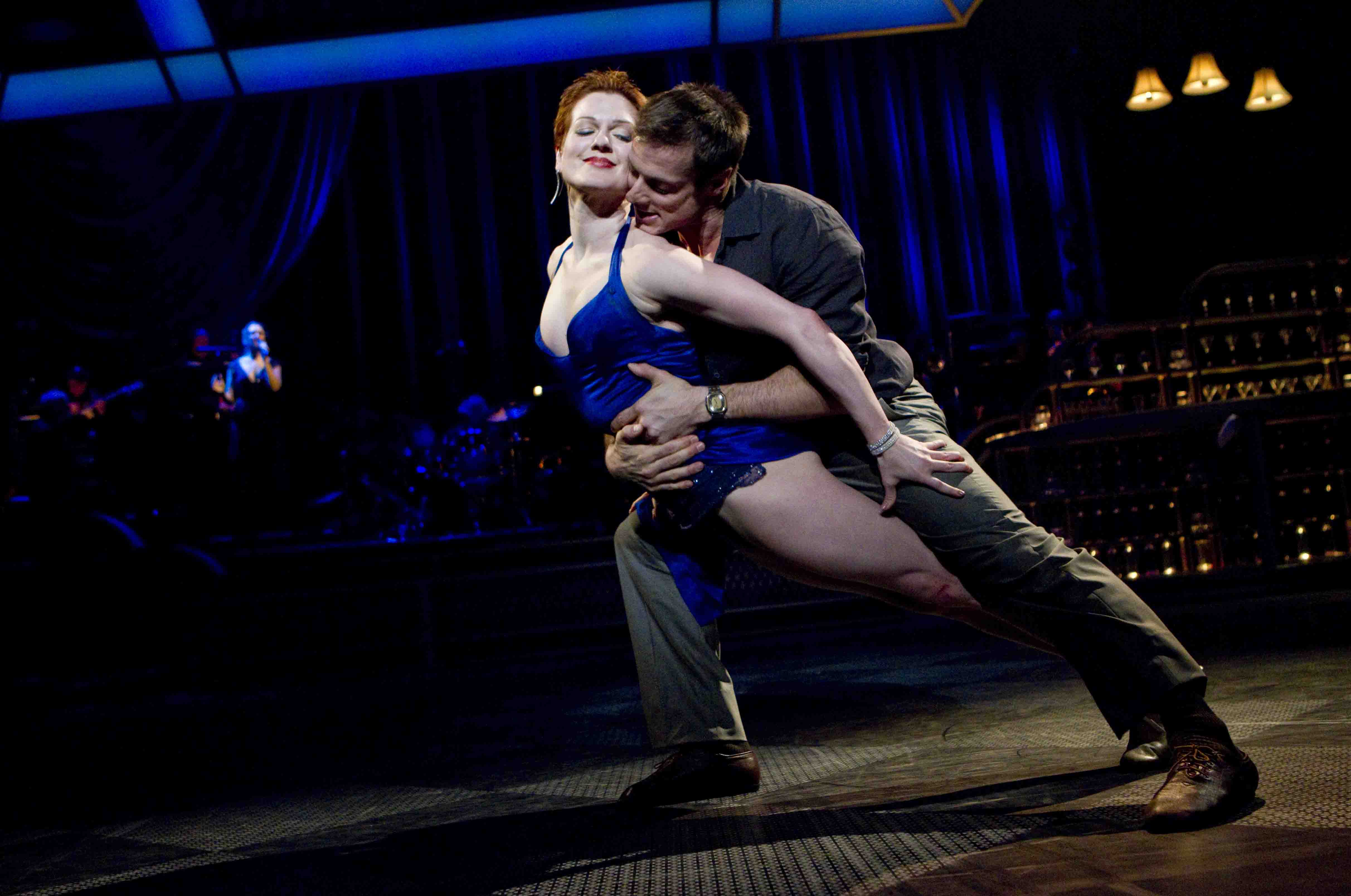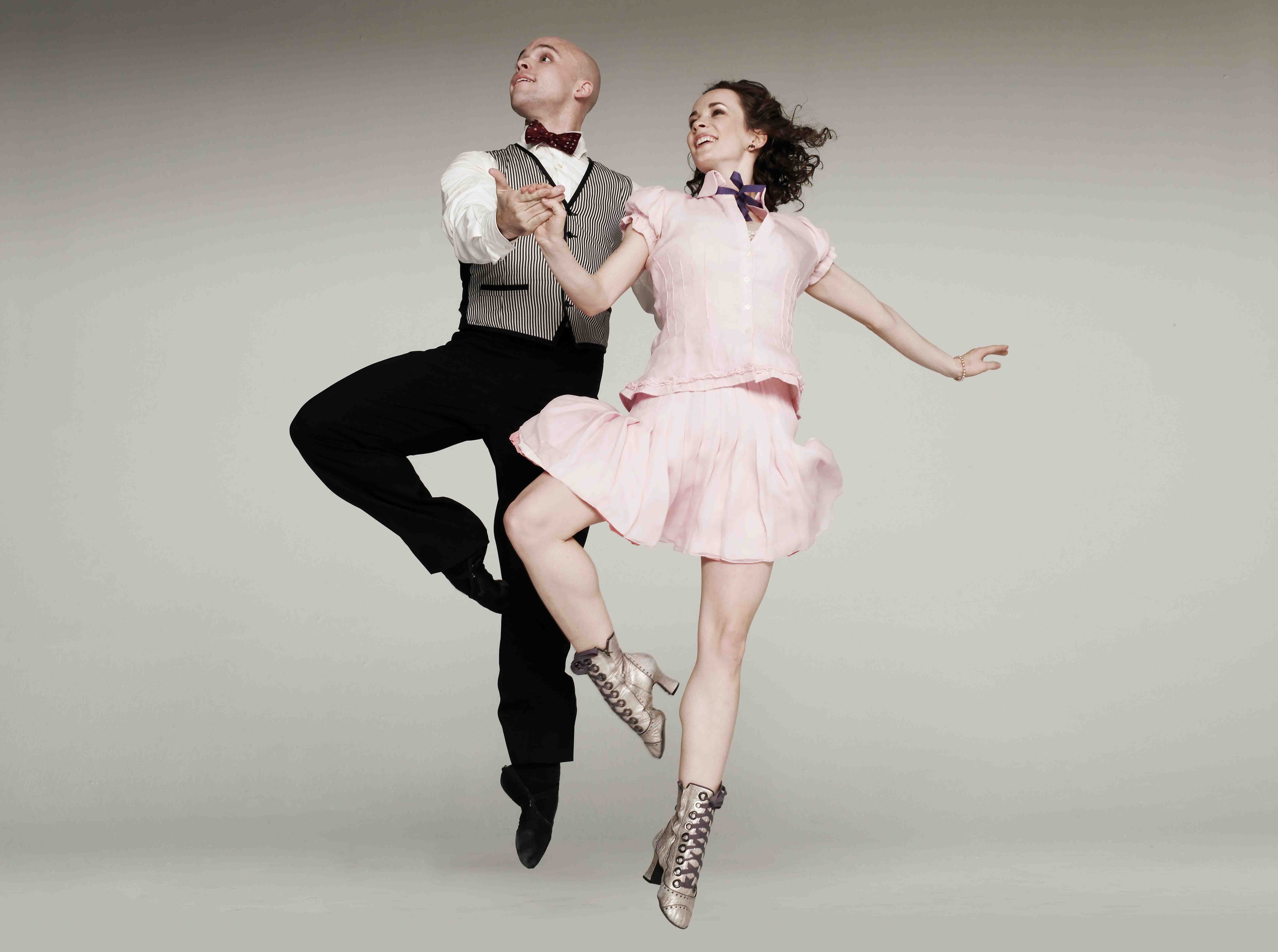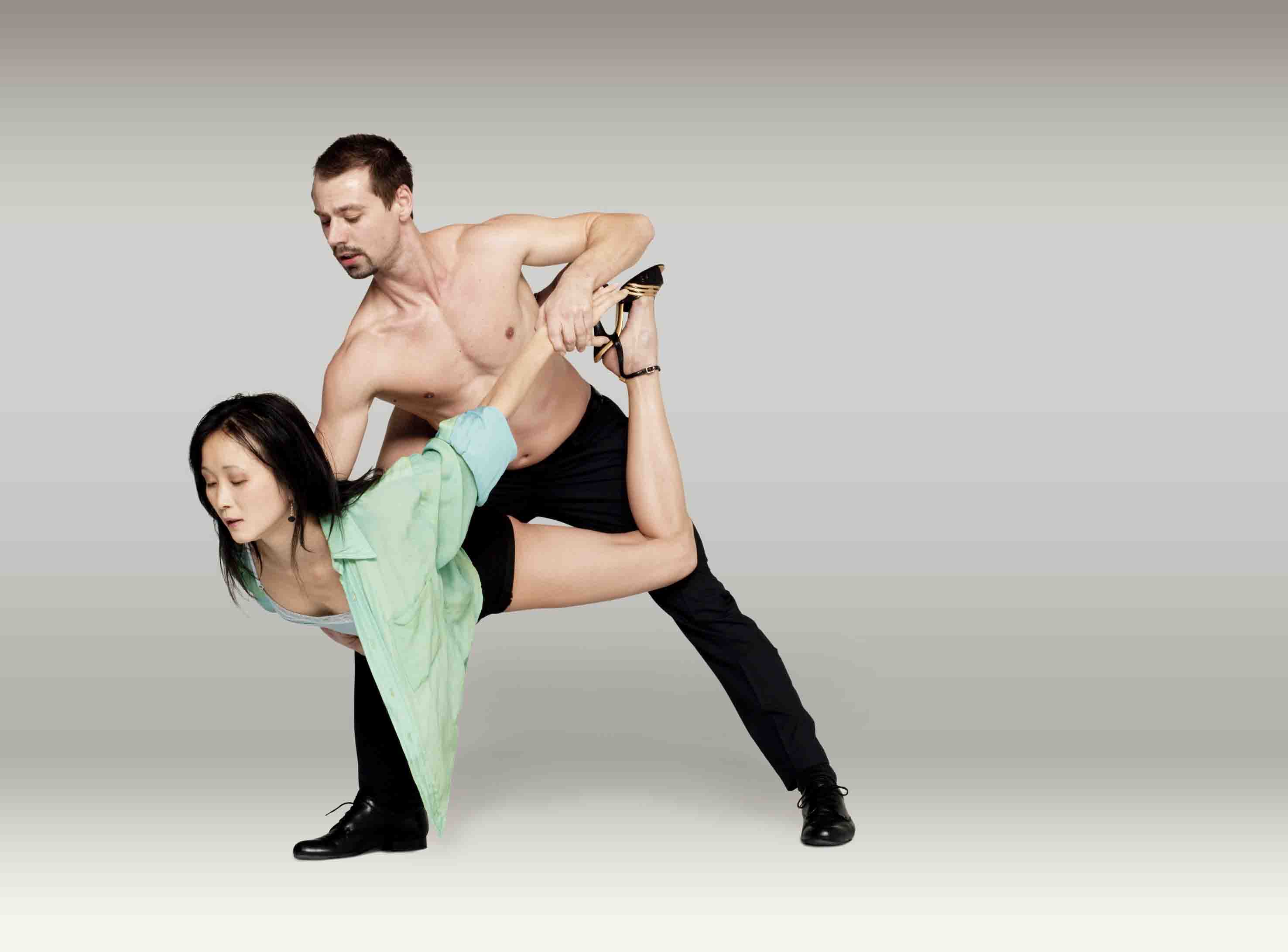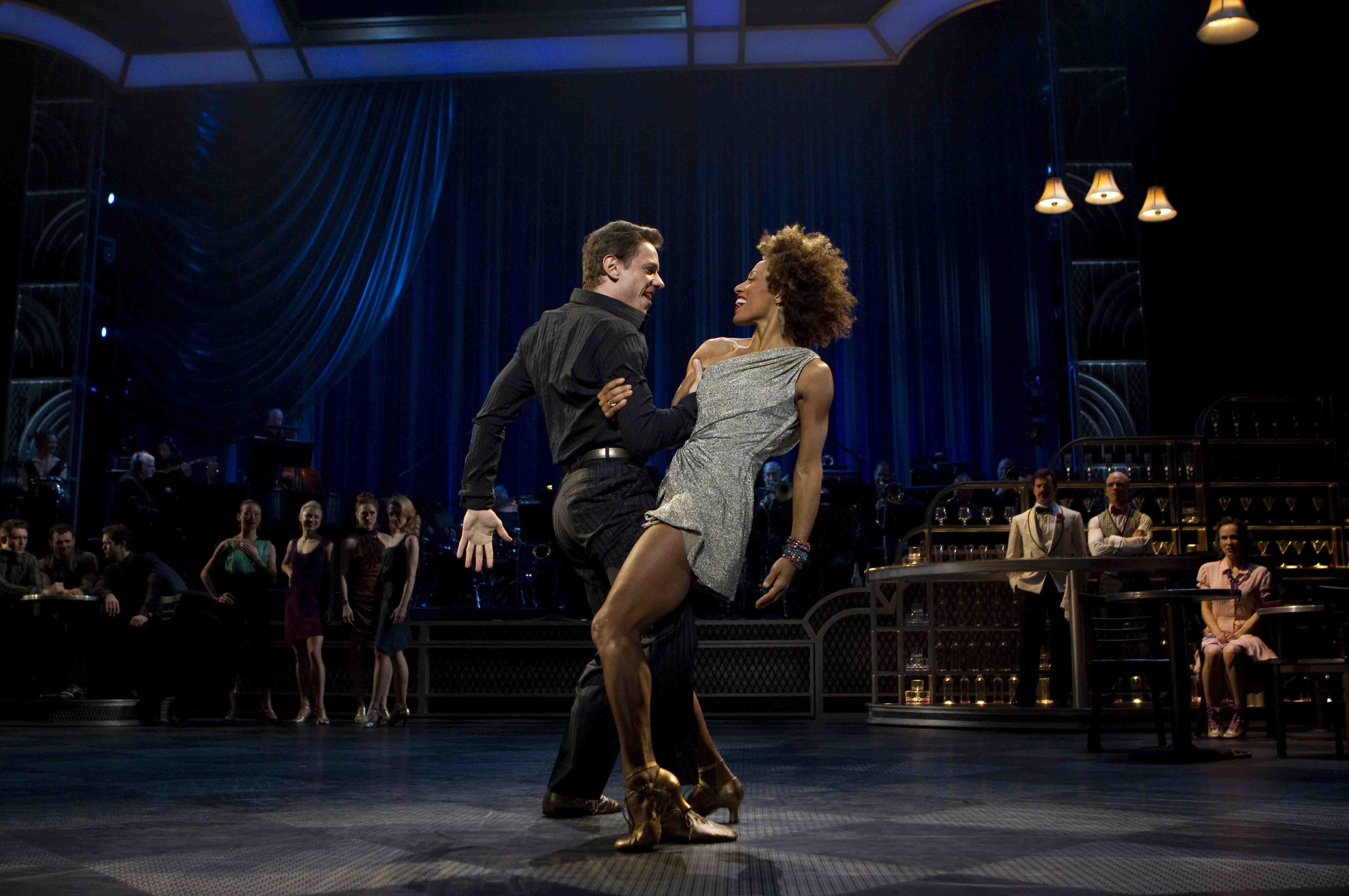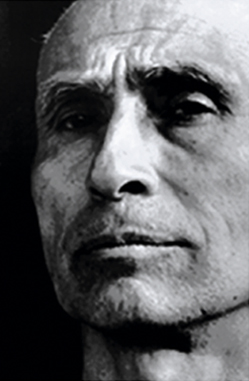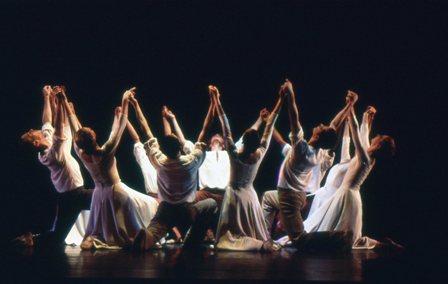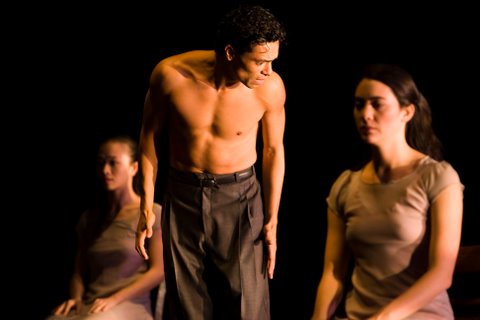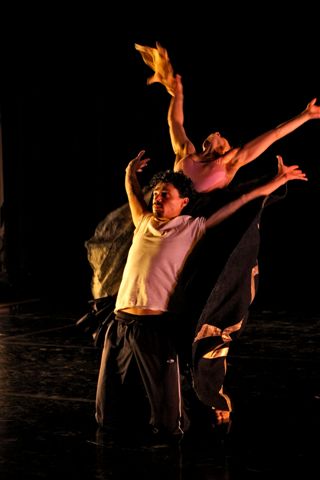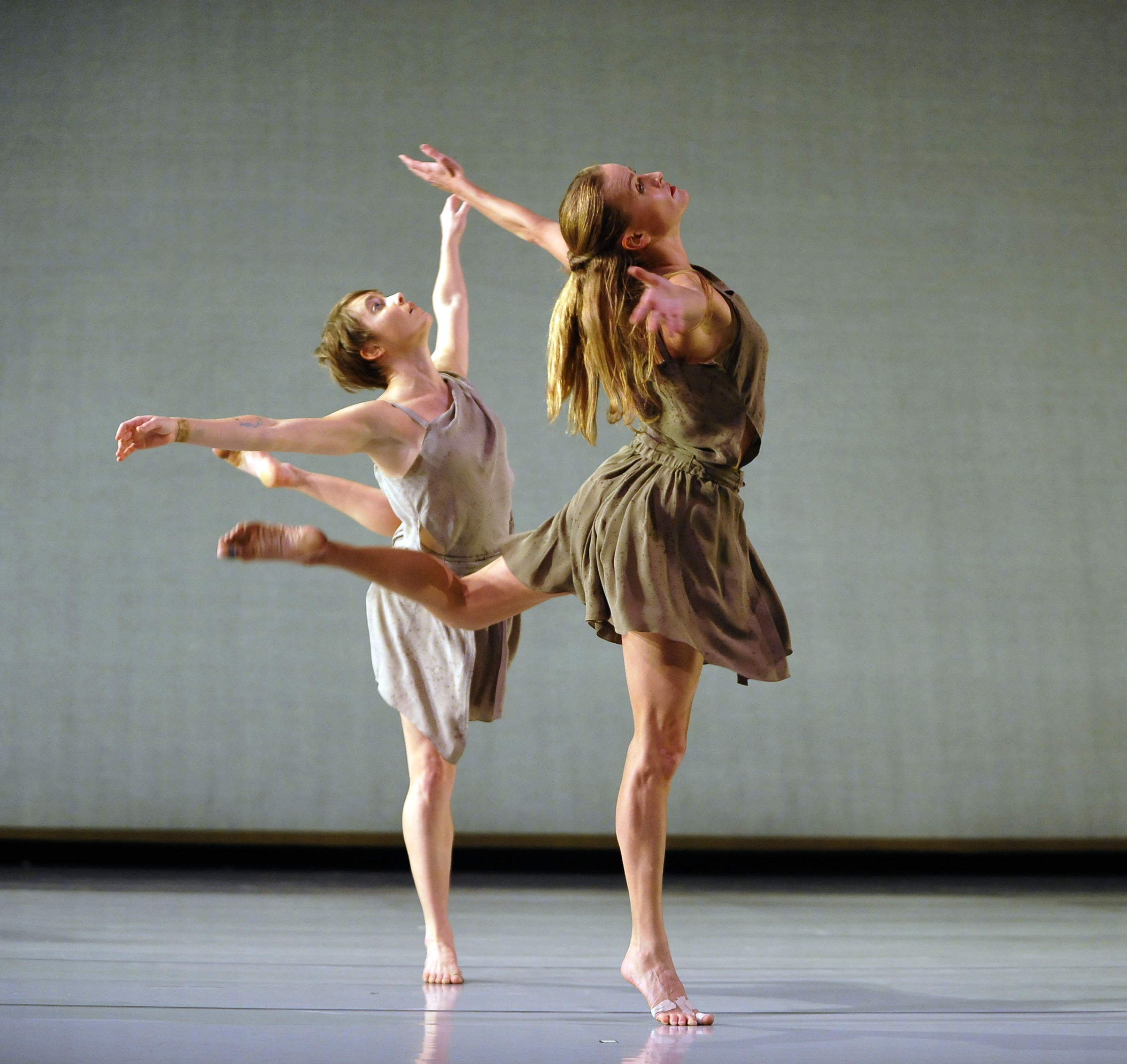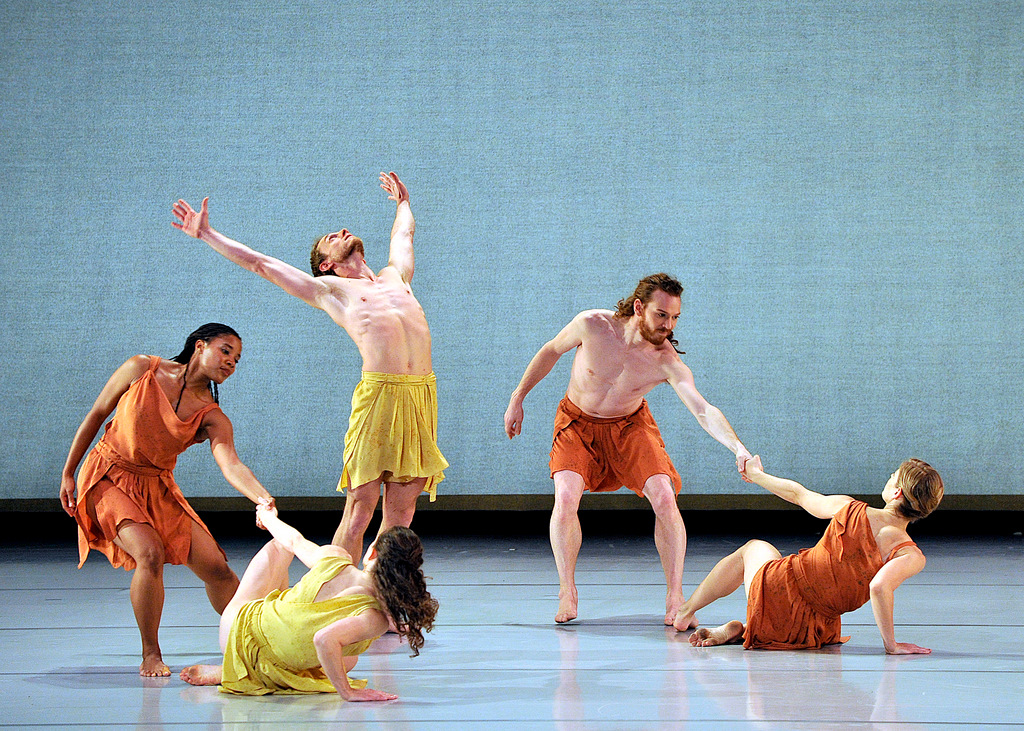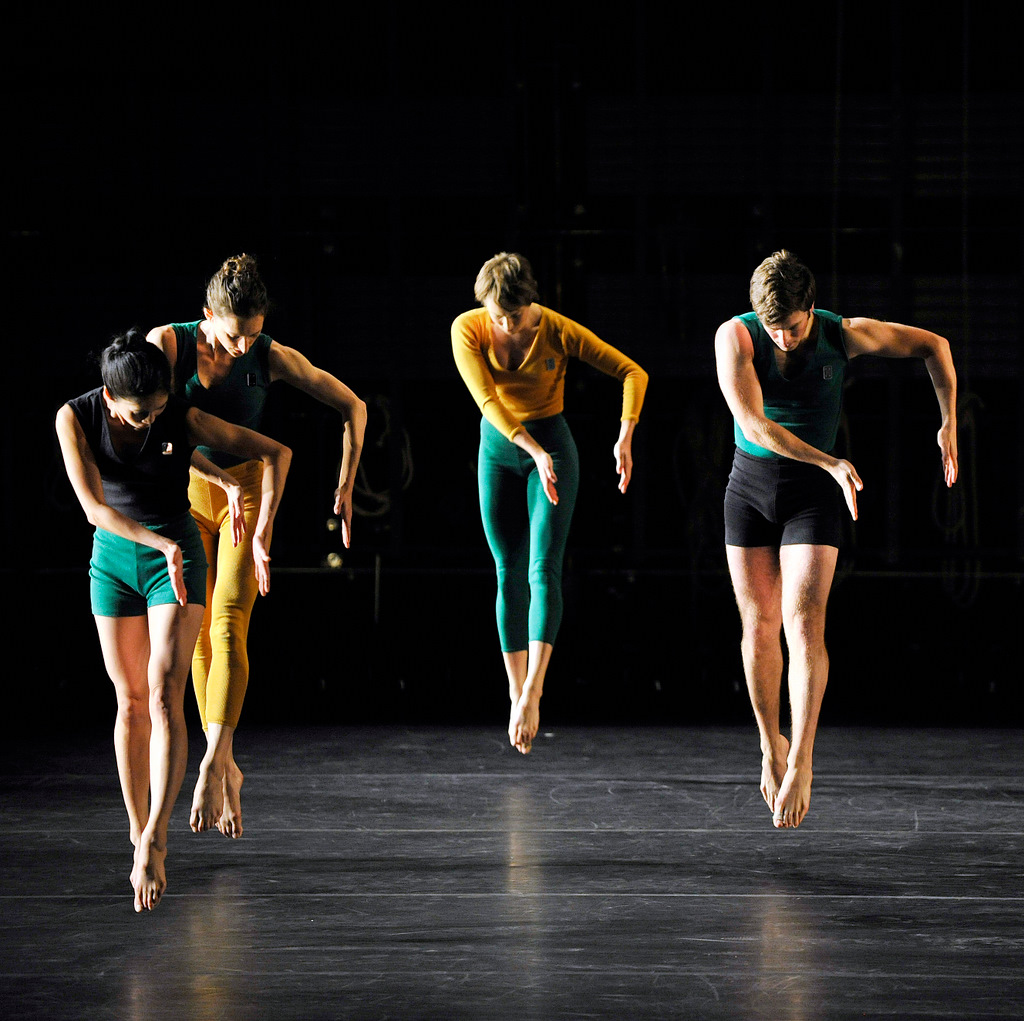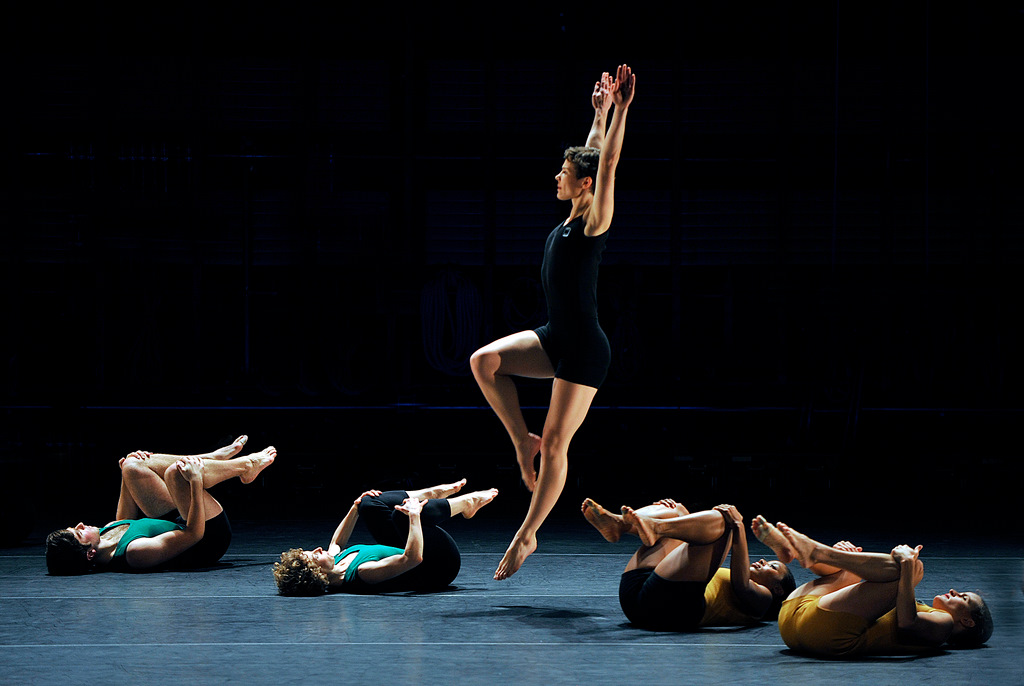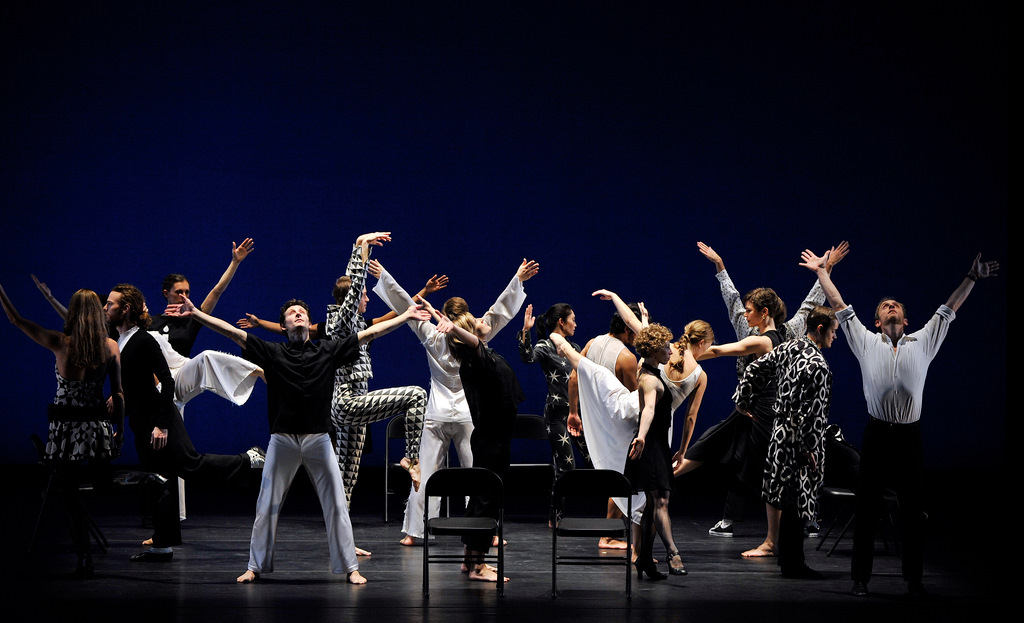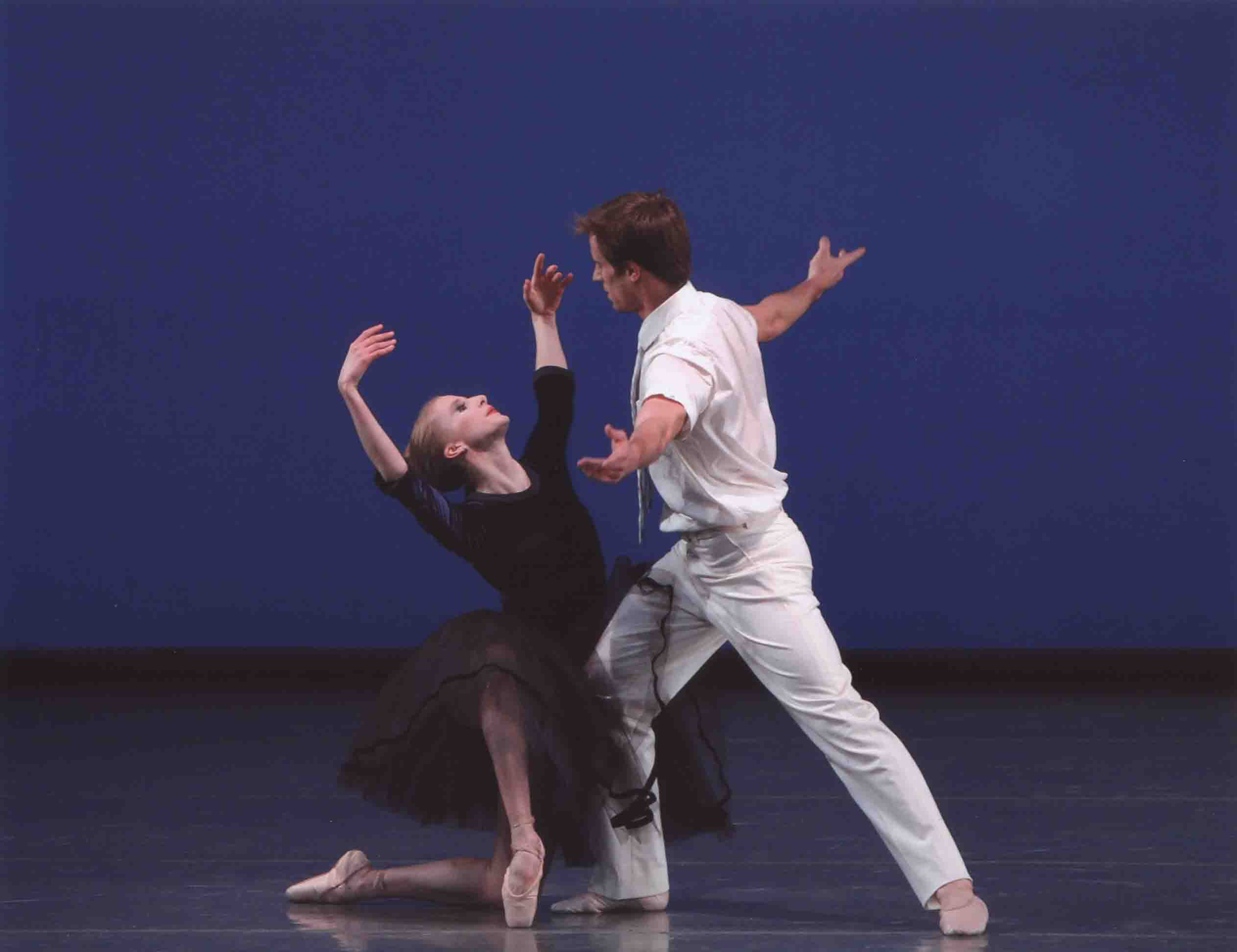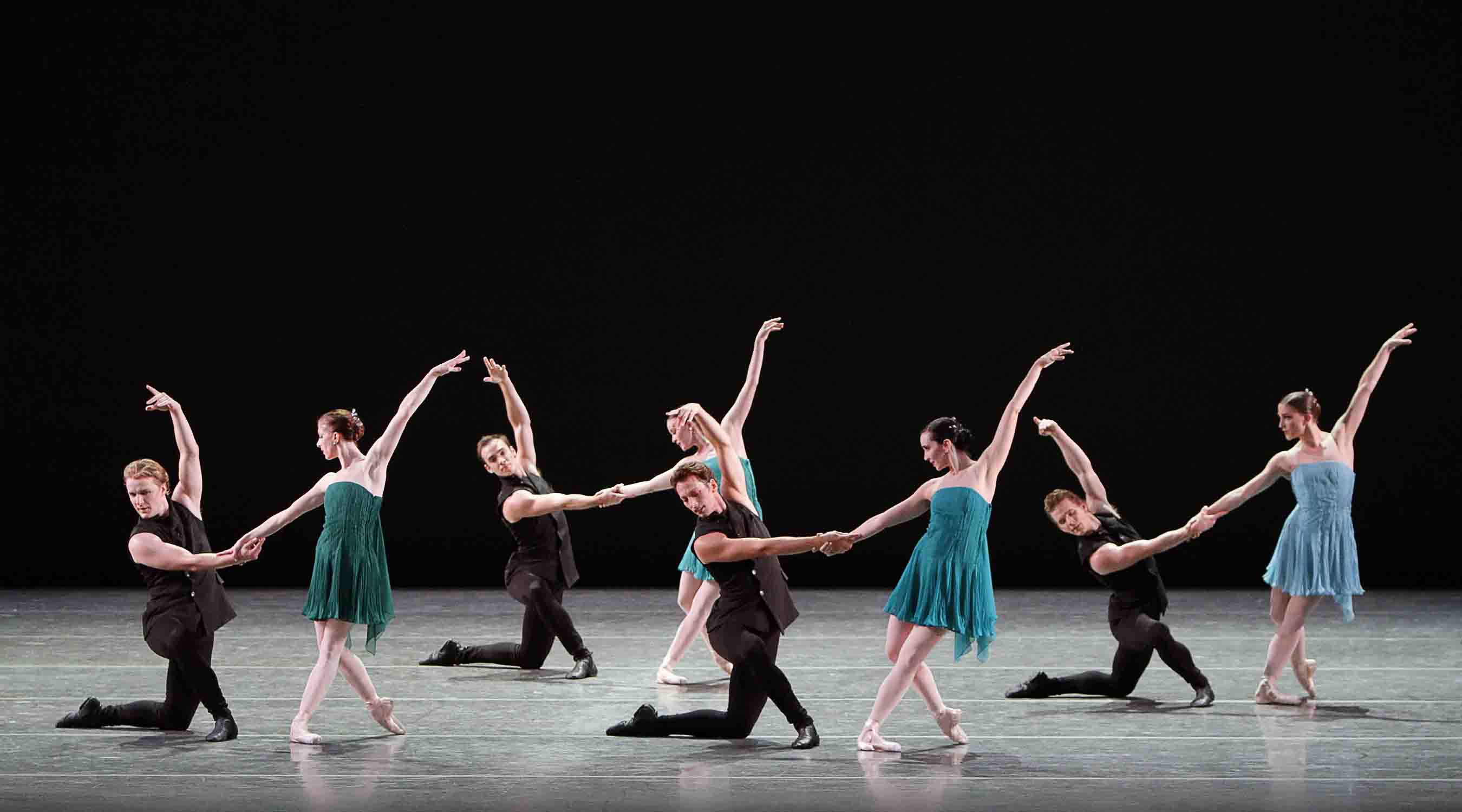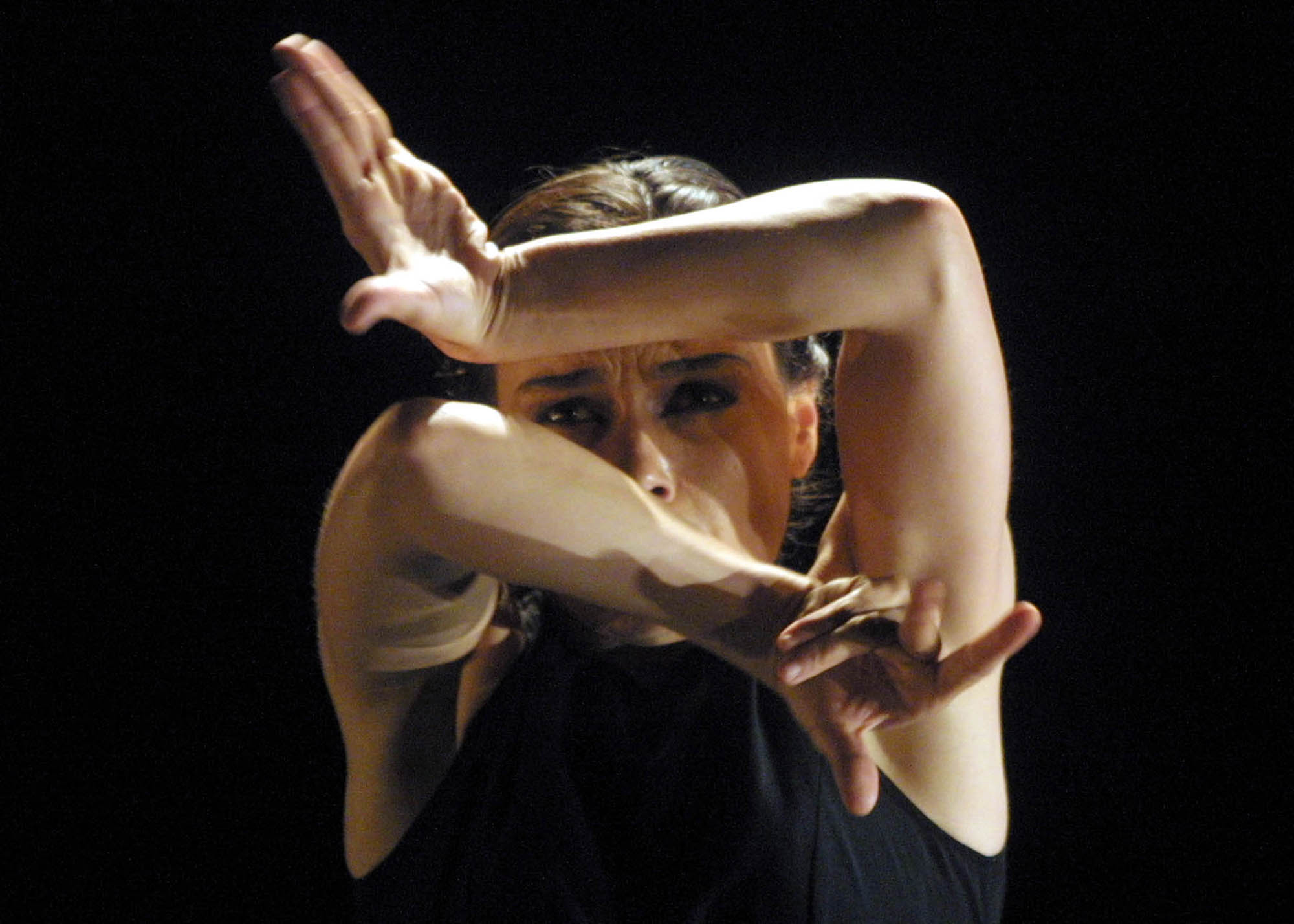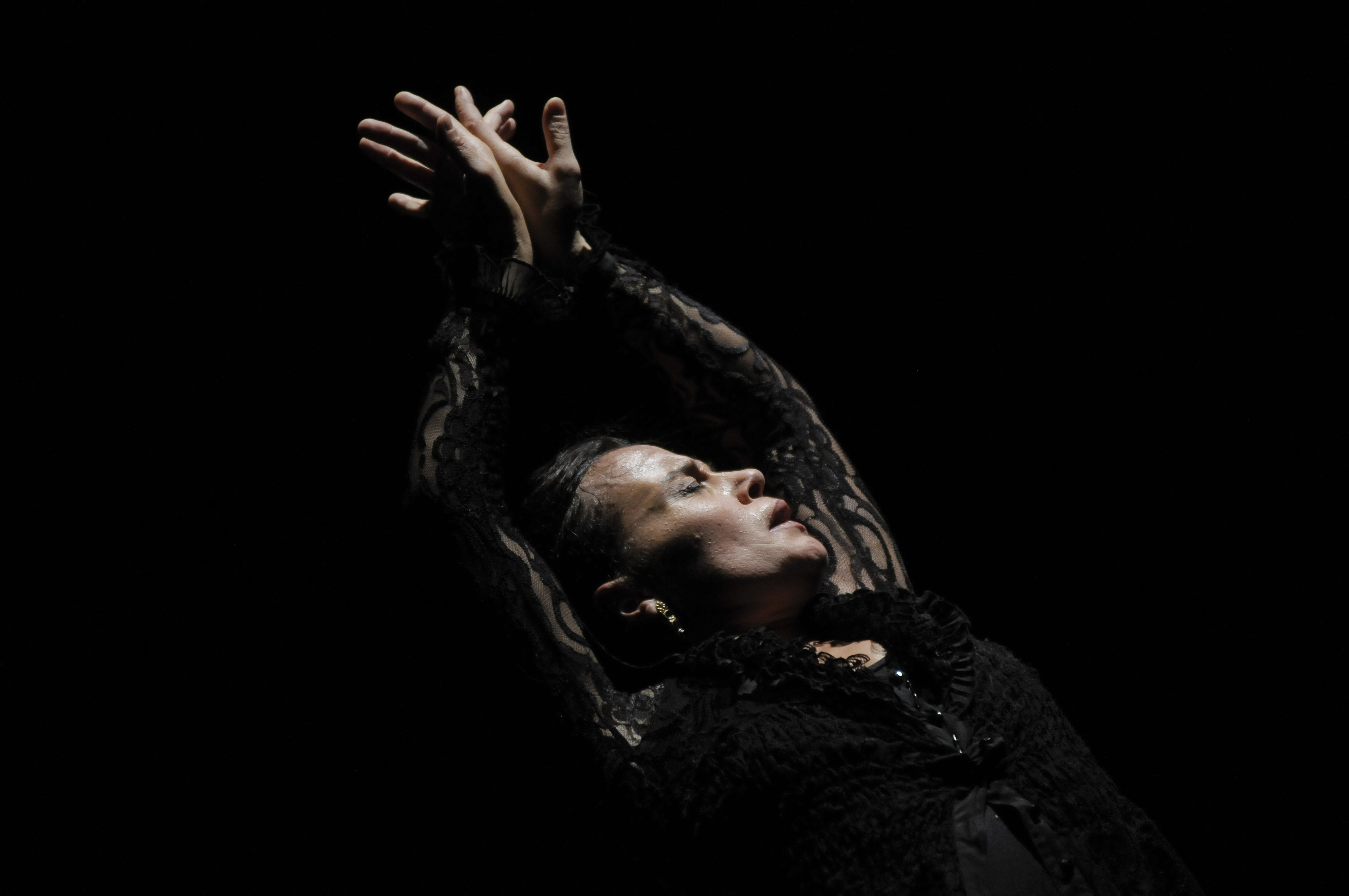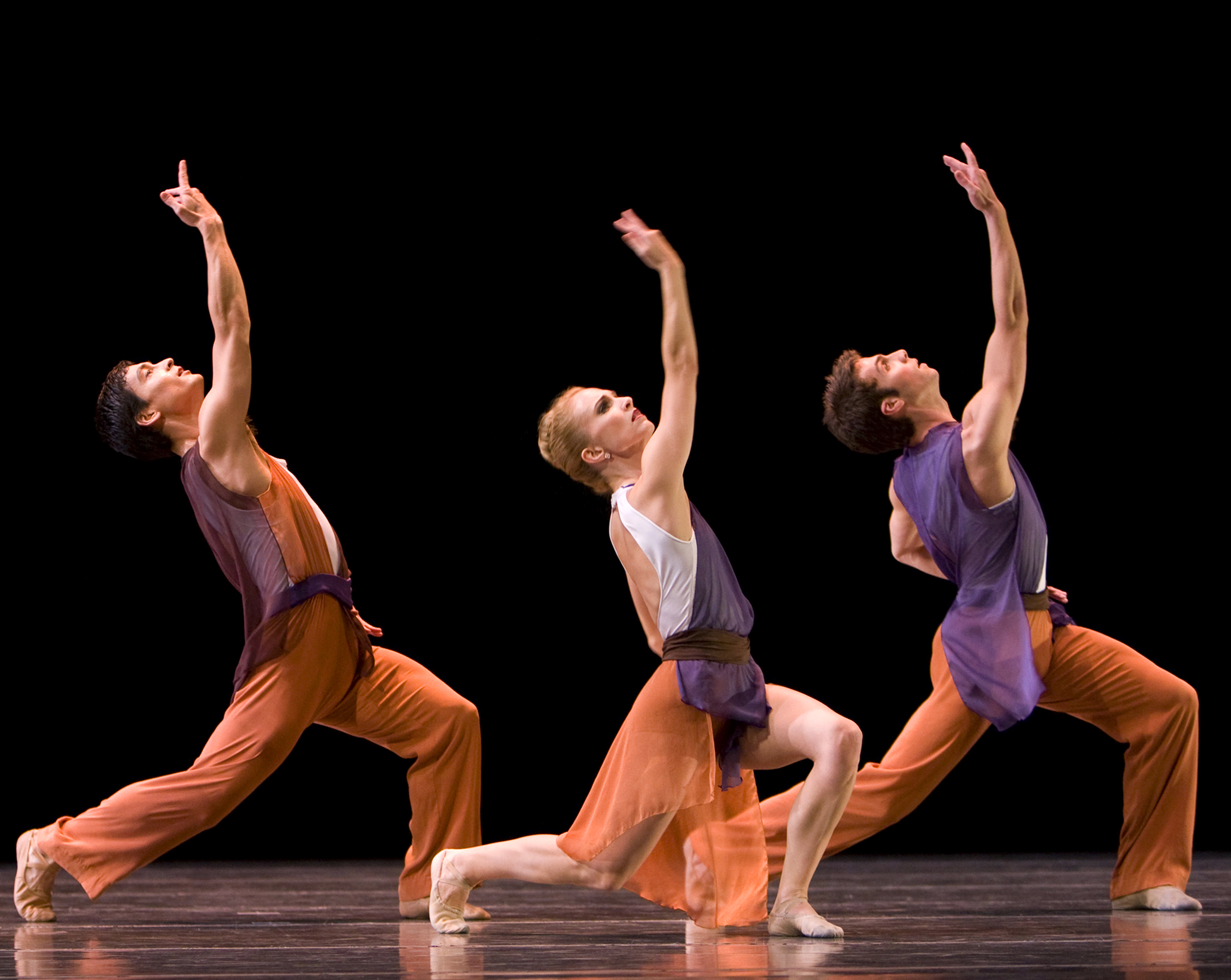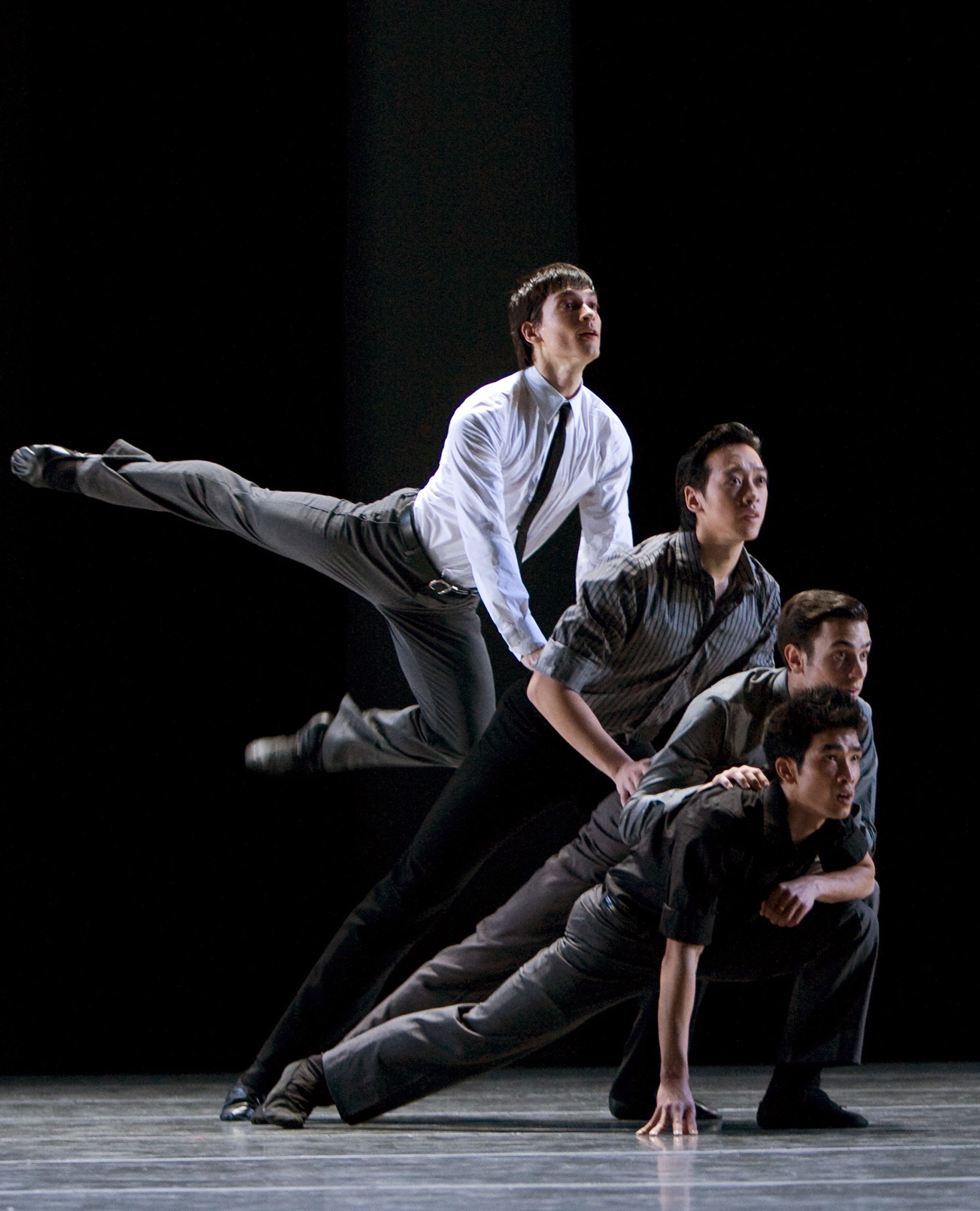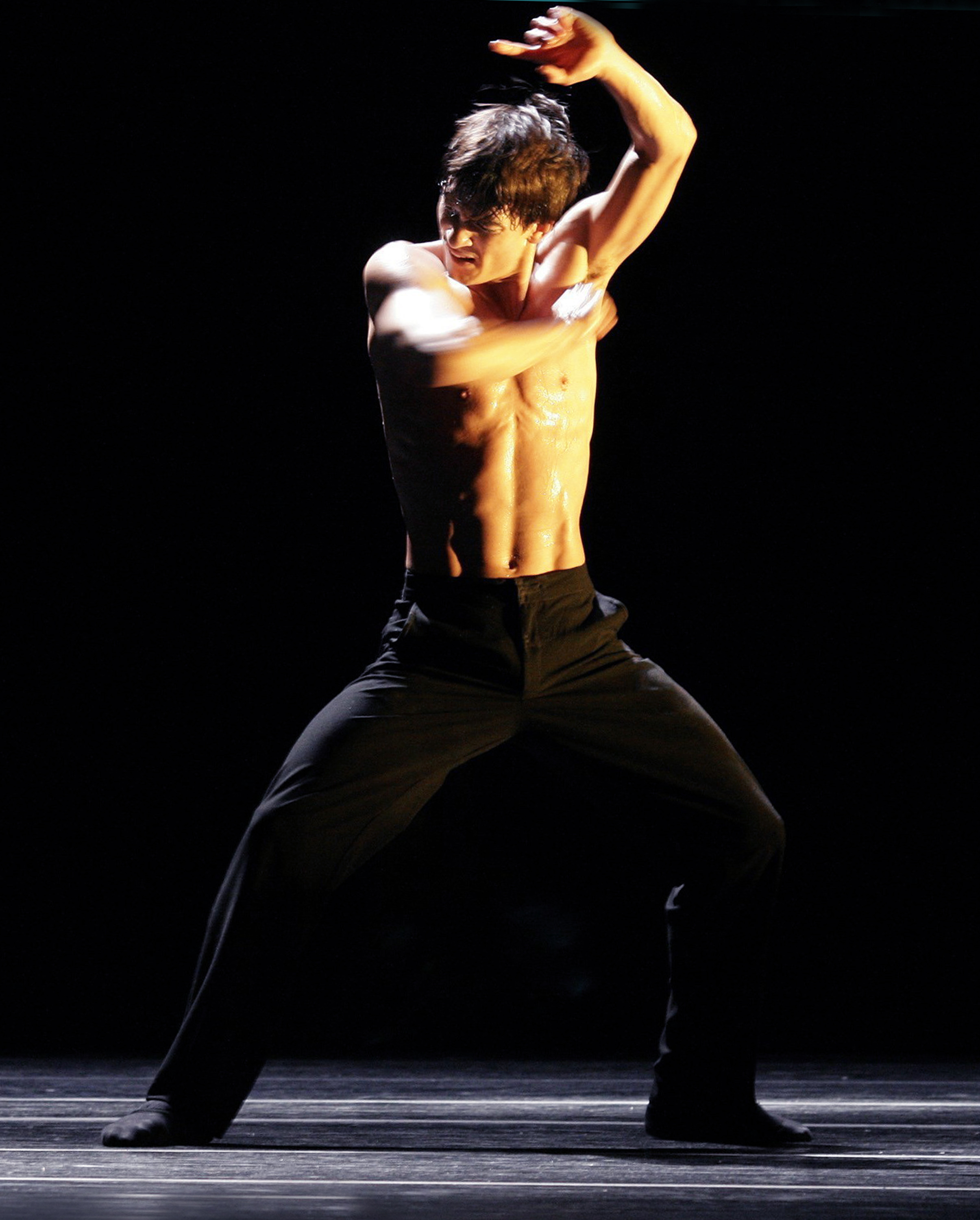Trisha Brown Dance Company / Baryshnikov Arts Center, NYC / April 7 -11, 2010
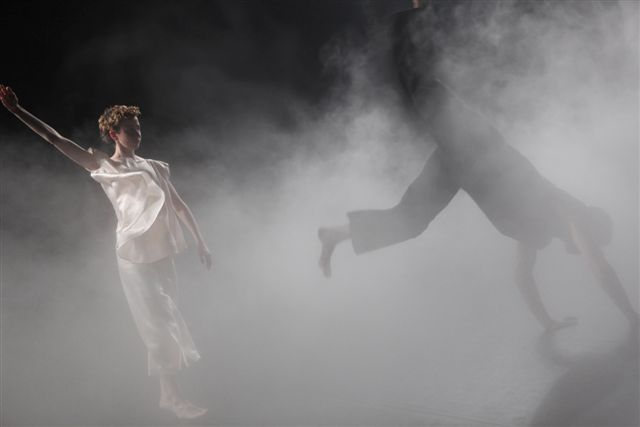
Leah Morrison and Nicholas Strafaccia in Trisha Brown’s Opal Loop/Cloud Installation #72503
Photo: Julieta Cervantes
Trisha Brown, celebrating the 40th anniversary of her company at the Baryshnikov Arts Center, is a certified original and quite likely a genius. More often than not, her choreography has been conceptual –from the early iconoclastic task dances executed in silence to lush operatic productions. This trait makes her very popular with European audiences, who dote on ideas, and with American viewers of an intellectual bent. Not that her work has ever seemed arid or calculating; as much as it’s governed by structure, it is tempered by Brown’s wry wit.
As her career evolved, Brown enriched her dances through collaborations with visual artists (notably Robert Rauschenberg) for stunning costumes and environments and through music that ranged from jazz to the classics. Not least, she has always been uncannily alert to the sensuousness of flesh in motion.
She was a gorgeous dancer herself, one who gave new depth of meaning to the word fluidity. She executed the deceptively casual movement she designed as if her body were a silk scarf being drawn through a keyhole. Yet, paused even for a nano-second, she had a firm rooted look and a sense of center so profound, it could never go awry. What’s more, she convinced you that what she was doing was practical, logical–quite simple, really. Even at their best, her marvelous dancers couldn’t outdo her, though they worked sensitively and diligently in her mode, the veterans duly passing the word along to the rising generation.
Brown’s face was remarkable too: as craggy as that of an early New England settler steadfastly enduring the physical and emotional hardships inherent in claiming a new world or perhaps that of a pioneer, dauntlessly pushing the American horizon westward. (Actually, Brown was a native of the Pacific Northwest, which has produced a remarkable number of dance innovators, among them Merce Cunningham, Robert Joffrey, Mark Morris.)
Perhaps the most extraordinary aspect of Brown’s body, however, was her back, which she bared and turned to the audience in the 1994 If you couldn’t see me. (Throughout this10-minute solo, the dancer faces upstage.) The spine and its attendant muscles riveted our attention. The title of the piece is evidence of Brown’s ever-amused and amusing irony. Actually, she couldn’t see us. We could see “her” as we gazed at that eloquent back; we just couldn’t see her face. This dance was (and remains), subtly, as radical a challenge to the accepted conventions of dancing as Brown’s blatantly idiosyncratic early work that had her company signaling on rooftops or walking on walls.
Brown is 73 now and no longer performs If you couldn’t see me–or indeed any of her dances–for the public. The loss is immense, though inevitable. At BAC, the solo was done at alternating performances by Leah Morrison and Dai Jian. I saw both.
Morrison, a lovely looking young woman, recalls Brown in her long limbs, cushioned joints, and velvety way of insinuating her movement into space, though she lacks Brown’s complementary staunch quality. Wearing the simple white costume Rauschenberg designed for Brown–the leotard-style top deeply scooped to leave the back naked, the calf-length skirt slit at both sides to free the legs–Morrison makes aspects of the choreography scrupulously clear: the occasional angular moves of the arms, for instance, that offset the impression of unfettered flow. Throughout the piece, her plainspoken rendition, free of attitude and adornment, is a blessing. But, when it comes to the essential, her back isn’t compelling.
The ability to project through the back while deprived of the drama of the face is a rare gift. Apparently Morrison wasn’t born with it; I don’t know if it can be learned. The other element that Morrison lacks can be acquired. Brown was in her late fifties when she choreographed If you couldn’t see me; her back had the topography of a seasoned athlete’s–vertebrae, muscles, and tendons distinct to the naked eye. That gnarled-tree effect, suggesting the wisdom of visceral experience, was an enthralling sight.
It’s only fair to note here that Morrison won a 2008 Bessie award for her performance of this role, so my reservations about her rendition may make me a dissenting party of one.
Jian is new to the role and still has a long way to go. He’s an undeniably adept dancer and a typical Brown acolyte in his softness and fluency. His dancing adds a fascinating element to the choreography because, since he was born and trained in China, Asian dance influences his way of moving–just slightly, like the merest trace of a “foreign” accent. At one fleeting moment he looked like a statue of an Eastern god, poised in the shelter of his temple.
Like Morrison’s, Jian’s back is relatively inexpressive, but in his case the radical concept of a dancer’s offering the audience the back rather than the face is undermined by the fact that, though Jian wears the split skirt, his entire torso is left nude. Think of it this way: In traditional Japanese costume, the erotic effect of exposing the nape of a woman’s neck depends on the elaborate swathing of the rest of the body. To bare shoulder or bosom as well would kill the original intention.
The 1994 If you couldn’t see me was the first solo dance Brown had made in 15 years. In 1995, she converted it into a duet called You can see us, which she performed first with Bill T. Jones, then, a year later, with the ballet superstar Mikhail Baryshnikov, as a pièce d’occasion. I saw the latter casting. The two moved side by side, she facing upstage, as was her wont, he down, as was his. Unlike the original solo, which engenders piercing observations and haunting questions in its viewers, the duet was no more than a curiosity.
Created in 1980, Opal Loop/Cloud Installation #72505 remains one of the most beautiful dances I’ve ever seen. The BAC audience seemed to be seduced by it too.
A black curtain veiling the farthermost area of the stage pulls apart to reveal the quartet that comprises the full cast. The four stand quietly, in profile, enveloped in a fog. Released by the opening of the curtain, the mist pours out to fill the entire stage and drift tentatively towards the spectators. In the course of fifteen minutes, as the mist swirls, assuming ever-changing shapes and degrees of density, the performers, too, move out into the space, becoming clearly visible, nearly invisible, and all the shadings in between.
The moving figures do what Trisha Brown’s people usually do, which sometimes looks like dancing, at other moments like skeins of the pedestrian gestures made by ordinary people getting on with their lives while absorbed in some sort of inner mediation. The danciest passage puts a male-female pair at the center of an imaginary diagonal line, partnering and not quite partnering, while the remaining man and the remaining woman position themselves at either end of that unseen line, each going through the movements the duet has assigned to his or her gender.
The mist, which moves gently, like a colony of scudding clouds changing shape in a gentle breeze, has been created by Fujiko Nakaya and is, rightly, referred to as sculpture. The crucial quality of this art, though–which, the house program instructs us, is intended to evoke the climate of Brown’s Pacific Northwest birthplace–is that it’s evanescent. Even more so than dancing, but in the same way. Its poignant beauty is intensified by the fact that it doesn’t last.
Opal Loop has no sound accompaniment beyond the hiss of the water being transmuted into clouds, the dancers’ padded footfalls, and, occasionally, their breathing because, for all the languorous mood it evokes–the feeling of swaying in a hammock, perhaps, as a summer day fades from sunset to twilight–the movement can be swift and demanding.
Opal Loop leaves its viewers with many potent afterimages–and afterthoughts as well. It encourages you to treasure the ordinary and shows you how the casual becomes important, even monumental.
© 2010 Tobi Tobias




